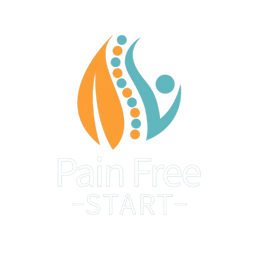Are you ready to embrace a healthier lifestyle but unsure where to start? Walking is one of the best and easiest ways to improve fitness, boost energy, and enhance overall well-being. The British Heart Foundation emphasises that aerobic exercises, including walking, cycling, and swimming, are beneficial for heart health. British Heart Foundation
Whether you’re new to exercise or getting back into movement after a break, this step-by-step guide will help you build a sustainable walking routine. Let’s lace up and take those first steps!
1. Check with Your Healthcare Provider First
Before starting any new exercise routine, it’s always a good idea to consult your healthcare provider, especially if you have:
✔ Pre-existing conditions (e.g., heart issues, arthritis)
✔ Recent injuries or surgeries
✔ Concerns about pain or mobility
They can offer personalised advice and help ensure you’re walking safely.
2. Start Slow & Set Realistic Goals
TOP TIP – Start where you are, not where you think you should be!
✔ Begin with short, manageable walks (10-15 minutes per session).
✔ Gradually increase duration and intensity as you build endurance.
✔ Set achievable goals—for example, walking 3 days a week before progressing to daily walks.
Remember: Small, consistent efforts lead to long-term success!
3. Warm Up & Stretch Before Walking
Before you start walking, take a few minutes to prepare your body:
✔ March in place or do light movements to warm up.
✔ Stretch your calves, hamstrings, and hips to prevent stiffness.
✔ Cool down after walking with gentle stretching.
This helps prevent injuries and improves flexibility for smoother movement.
4. Choose the Right Footwear for Comfort & Support
Invest in quality walking shoes that provide:
✔ Proper arch support
✔ Good cushioning for impact absorption
✔ A comfortable fit to prevent blisters
5. Find a Walking Route That Keeps You Motivated
Walking should be enjoyable, not a chore! Try different locations to keep it interesting:
✔ Local parks
✔ Nature trails
✔ Safe neighborhood routes
Changing your scenery keeps you engaged and challenges your body in new ways.
6. Focus on Proper Walking Form
Maintaining good posture helps prevent aches, pains, and injuries.
✔ Stand tall with your head up and shoulders relaxed.
✔ Keep your core engaged to support your back.
✔ Take natural strides—avoid overstriding or shuffling.
✔ Swing your arms naturally for better balance and momentum.
TOP TIP – This blogs looks in more detail at walking technique – Mastering Walking Technique for Better Health

7. Gradually Increase Duration & Intensity
According to the NHS, adults should aim for at least 150 minutes of moderate-intensity aerobic activity, such as brisk walking, each week. nhs.uk
How to progress:
✔ Start with short walks (10-15 minutes)
✔ Gradually increase to 30 minutes or more
✔ Pick up the pace for a brisker, more effective workout
Listen to your body—it’s better to build endurance slowly than to overdo it!
8. Track Your Progress for Motivation
Keeping track of your walks can help boost motivation and show progress over time.
✔ Use a fitness tracker or smartphone app
✔ Record walk duration, distance, and steps
✔ Set small, achievable milestones
Example: Increase your steps by 500 each week until you reach your goal!
9. Listen to Your Body & Allow Rest Days
It’s normal to feel a little sore when starting a new routine, but pain is a warning sign.
✔ If you feel discomfort, slow down or rest for a day.
✔ Stay hydrated before, during, and after walking.
✔ Mix in restorative exercises (like gentle stretching or yoga).
TOP TIP – If aches and pains persist, my Pain-Free Body Program can help identify and fix underlying mobility, strength, and posture issues before they become bigger problems! Click to learn more.
10. Stay Consistent & Make Walking a Habit
The key to long-term success? Consistency!
✔ Walk at the same time each day to form a habit.
✔ Fit walking into daily life—lunch breaks, errands, or post-dinner strolls.
✔ Find a walking buddy for extra motivation and accountability.
Once walking feels easy, you can challenge yourself with:
✔ Interval walking (alternating fast and slow paces)
✔ Adding hills or stairs for strength
✔ Carrying light weights for extra resistance
Final Thoughts
Congratulations on taking the first step toward a healthier lifestyle! Walking is one of the simplest yet most powerful exercises you can do to improve fitness, energy, and overall well-being. It is one of my firm favourites!
So, grab your trainers, step outside, and enjoy the many benefits of walking—you might even see me out there!
Take care, Helen
Helen Manders BSc (Hons) MCSP HCPC
Chartered Physiotherapist Since 2001



